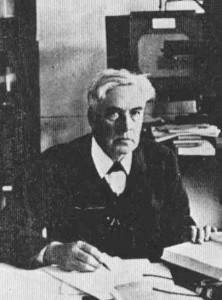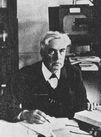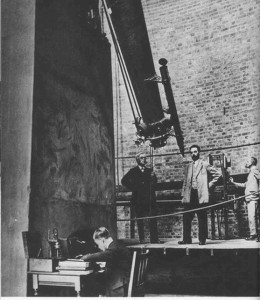| INNES, Robert Thorburn Ayton Amateur turned Professional Astronomer Born: 10 November 1861, Edinburg, Scotland. |
|
|
|
|
| Famous for: Discoverer of Proxima Centauri, faint companion star to Alpha Centauri. Brilliant self-taught mathematician and astronomer. He left school at age 12, but at age 17 became a fellow of the Royal Astronomical Society. In 1923 the University of Leiden conferred an honorary doctorate on him. Director of the Republic Observatory (1903 – 1927). (During his time as director it was never called the Republic Observatory, but underwent the following name changes; Government Meteorological Observatory, Transvaal Observatory and Union Observatory.) . Summary: |
|
|
|
|
| History: Innes was an exceptional mathematician and was mainly self taught. He left school at the age of 12, but at the age of 17 he became a fellow of the Royal Astronomical Society. After marrying he moved to Australia where he became a wine merchant. He was successful, but his heart was in the sky. “He was encouraged by several Australian astronomers, among them W. F. Gale, celebrated as an observer of comets (a periodical comet which he discovered is named after him). Gale loaned him an old 61-inch Cooke refractor, and Innes began his real work: the study of double stars in the Southern Hemisphere. … First, Innes began to search for new doubles. After a mere thirty hours’ search with the 61-inch refractor he had discovered twenty-six. He published his original list in December 1894; he acquired a larger reflector, and soon issued a second list of new pairs. Clearly, the field of discovery was wide open”. [Copied from Moore, pp. 93 – 94.] He decided to make astronomy his career. “Wine is all very well in its way, but Innes had no wish to make it his permanent career. Now that he had some published papers to back his claims he wrote to Gill at the Cape, offering his service. Gill was impressed, but he was limited in the numbers of staff members he could employ, and all he could suggest was a relatively humble post at a small salary. If Innes cared to throw up his promising Australian connections and come to the Cape as secretary- cum- librarian- cum- accountant, he could do so. Innes, being Innes, accepted, and in 1896 he arrived in South Africa, ready to devote the rest of his life to astronomy”. [Copied from Moore, p. 95.] Royal Cape Observatory: “At first his personal research was confined to what was officially his free time, but even so he managed to accomplish a great deal. By 1898 he had discovered another 280 double stars, and in the following year he published his first Reference Catalogue of Southern Double Stars, dealing with 2 140 pairs. He also concentrated upon variable stars, and in addition he measured the proper motions of many stars in the southern sky. He even revised the Cape Photographic Durchmusterung, one of the most important of existing star-catalogue”. [Copied from Moore, p. 95.] Innes continued his work on double stars, impressing Gill so much that he recommended Innes for the post of Director for the new Observatory in Johannesburg. (Look Republic Observatory) The new Observatory was created as primarily a meteorological station, with some astronomical functions. Innes became director in 1903, and managed to transform the observatory into a solely astronomical observatory by 1907. “Indeed, he was primarily a mathematician, though he is best remembered today for his outstanding observational results. One of his most famous discoveries was that of Proxima Centauri, the faint companion of Alpha Centauri, which was subsequently found to be the nearest star beyond the Sun; it lies at a distance of a mere 4.2 light-years. Innes did not happen upon it by sheer chance. He thought that there might be a dim third star in the Alpha Centauri system, so he started a systematic search for it; he took numerous photographs – and in 1912 he found it. Around this time, too, he advanced the use of the blink-microscope, which is a device for examining exposed photographic plates. In essence, the two plates to be compared are placed side by side in the instrument, and each is observed in turn; by flicking to and fro in rapid succession, a moving object will be detected with relative ease. Proxima was located in this way, and so, subsequently, were many minor planets”. [Copied from Moore, p. 101] Innes was a farsighted person and managed to shape the Republic Observatory into a world class observatory. “In 1927, the date of publication of his second and last catalogue of southern double stars and two years after the great 26.5 inch refractor was put into commission, Innes finally retired from the Directorship. He left behind an impressive record. He is credited with the discovery of 1628 new double stars, and he made many thousands of measurements; his asteroid work was equally outstanding – for instance, in 1924 he suspected that the shape of the strange minor planet Eros was unusual, and using the great refractor in 1931 his successors, van den Bos and Finsen, confirmed this, managing to measure the rotation period. (Witt, at Berlin, discovered Eros in 1898. It has an orbit, which swings it inside that of the Earth, and sometimes, as in 1931 and 1975, it can come well within twenty million miles of us. The former approach was used to help in measuring the length of the astronomical unit, as we have already noted; and in this work Union Observatory astronomers played an important part. We now know that Eros is shaped rather like a cosmical sausage, 18 miles long but only 9 wide at its thickest part.)” [Copied from Moore p. 102.] “Innes was a man of many interests. He was, for example, a chess player of unusual skill, who might have become a Master if he had had sufficient time. He lived only a few years after his official retirement; while in London, on 13 March 1933, he died with tragic suddenness. He was a great man as well as a great astronomer. It is said that he had many friends, few critics and no enemies”. [Copied from Moore p. 102.] . Career: Innes had little schooling and no formal training in Astronomy. 1894: He published first list of binary stars, and soon thereafter a second list. (This was whilst he was a wine merchant in Australia, using a borrowed telescope) 1896: Moved to Cape Observatory in Cape Town as underpaid secretary – cum – librarian – cum accountant. Director of the Republic Observatory (1903 – 1927). Discover Proxima Centauri in 1915. 1923: the Univ. of Leiden conferred an honorary doctorate on him. 1927: Retired. . Personal: Born 1861 November 10 at Edinburg Scotland. He was the eldest of six children. Left school at age 12. Thereafter he was self-taught. He ended up awarded an honorary doctorate. 1884: Married Anne Elizabeth, nee Fennel (presumably in Scotland). They had three sons. Innes and his family moved to Sydney Australia, where he became a very successful wine merchant. 1896: Moved to Cape Town. (Look Career) 1903: Moved to Johannesburg. (Look Career) 1927: Retired Died 1933 March 13 with tragic suddenness in London. . Interesting Personal Aspects: Innes was an unconventional person. He decided that the heat of the Transvaal (Gauteng) mitigated against the wearing of a tie, and never wore a tie again, even at the formal function at the Dutch Court when he received his doctorate. Innes was a chess player of unusual skill, who might have become a master. It is said that he had many friends, few critics and no enemies. |
|
|
|
|
|
Link to the Telescope Manufacturers. |
|
|
|
|
|
Link to the Main Bibliography Section and more information about Sources. |
|
| Remaining Artifacts: . Bibliography: Laing, J.D. (ed.), The Royal Observatory at the Cape of Good Hope 1820 – 1970 Sesquicentennial Offerings, p. Moore, P. & Collins, P., Astronomy in Southern Africa, pp. 92 – 102. (General Source) Smits P. A Brief History of Astronomy in Southern Africa. (Unpublished)..By Innes: Innes R.T.A., 1927, Southern Double Star Catalogue, -19° to -90°, Union Obs., Johannesburg, South Africa |
|
|
|
|
| Related Internal Links: Johannesburg Observatory. . Related Internal Links: Publications of the Astronomical Society of Australia Obituary: |
|
Gallery
Robert Thornburn Ayton Innes. He was the first Union Astronomer.
Source: JASSA, 1933, Vol.3 , No.3 , P.1

Courtesy South African Library. Source: Moore
The four successive Union Astronomers: R.T.A. Innes (left) 1912 – 27; H.E. Wood (right) 1927 – 41; W.H. van den Bos (centre) 1941 – 56; W.S. Finsen (at desk) 1957 – 65.
Source: Moore



